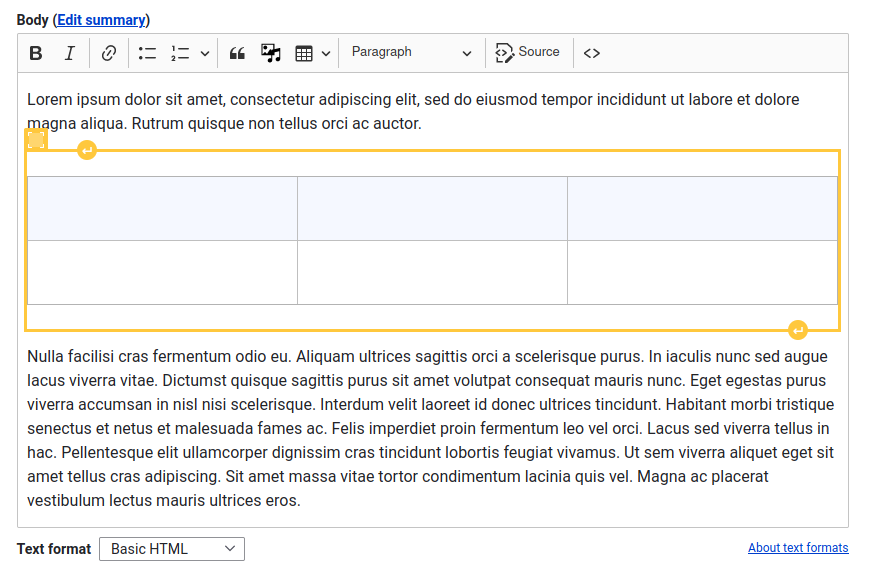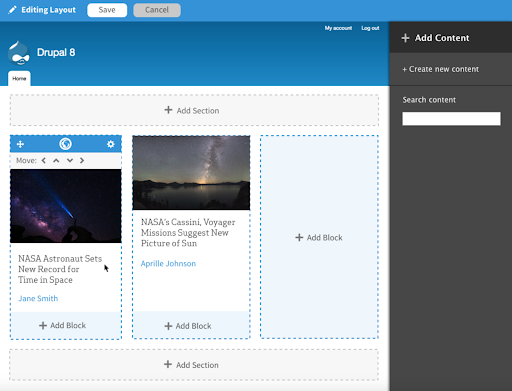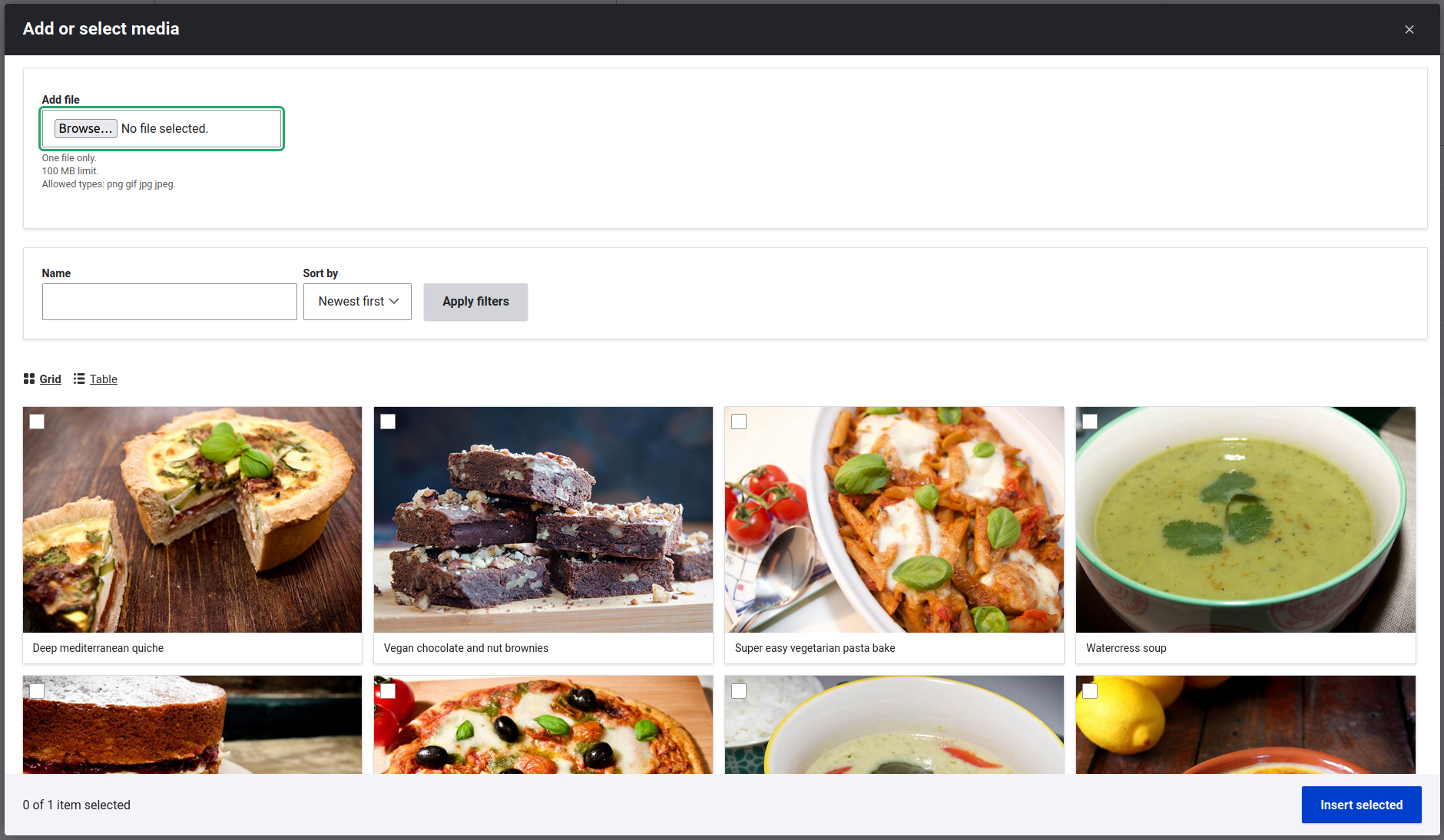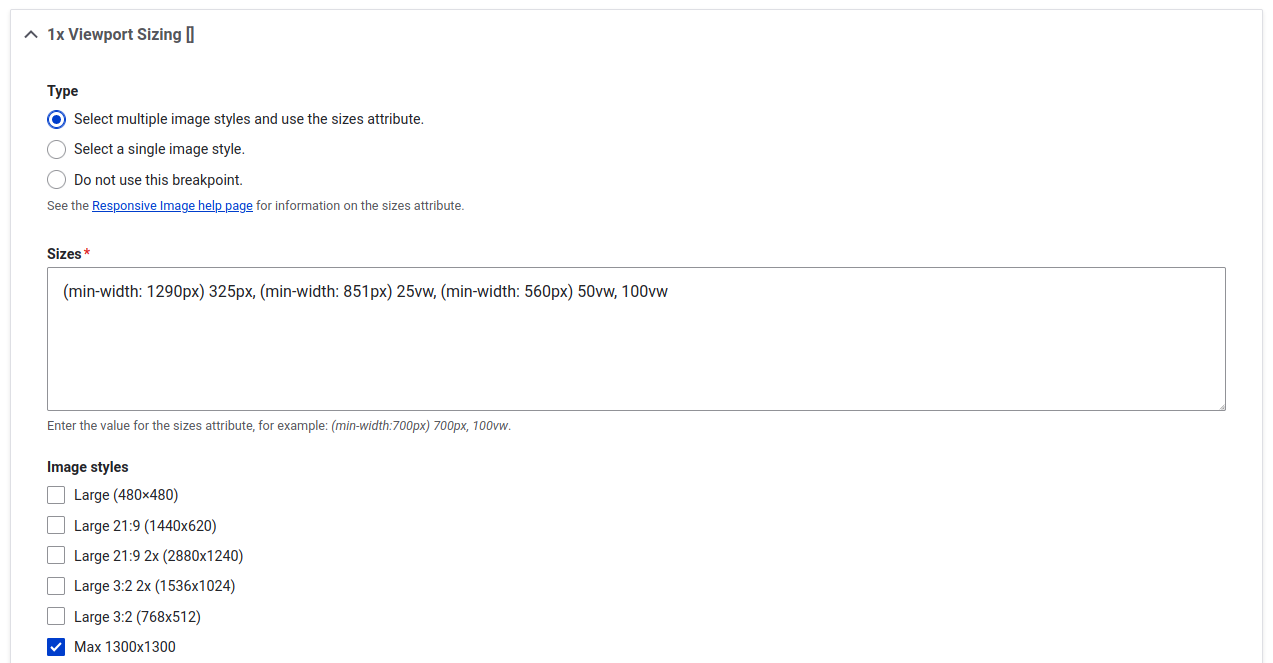Born over 20 years ago, Drupal is one of the most adopted and appreciated Open Source CMS.
Its founder, Dries Buytaert, is also the creator of Acquia, which is to Drupal what RedHat is to Linux: it demonstrates that it is possible to generate tangible value from Open Source software. A noble intention also recognized by Gartner, which has positioned Acquia, and therefore Drupal, in the most important sector of the Magic Quadrant for Digital Experience Platforms, alongside names such as Adobe and Sitecore.
What will this article be about?
- The importance of Drupal
- 11 advantages of Drupal
- ADVANTAGE 1: OPEN SOURCE
- ADVANTAGE 2: RELIABLE AND WIDESPREAD
- ADVANTAGE 3: SECURITY
- ADVANTAGE 4: MANAGES EDITORIAL FLOWS AND COMPLEX WORKFLOWS
- ADVANTAGE 5: HAS ADVANCED MULTILINGUAL MANAGEMENT INTEGRATED IN THE CORE
- ADVANTAGE 6: NATIVELY MANAGES MULTISITE FEATURES
- ADVANTAGE 7: EXCELLENT PERFORMANCE
- ADVANTAGE 8: API-FIRST
- ADVANTAGE 9: MOBILE-FIRST
- ADVANTAGE 10: DRUPAL IS CLOUD NATIVE READY
- ADVANTAGE 11: IT IS THE RIGHT CHOICE FOR THOSE INVOLVED IN MARKETING AND DIGITAL COMMUNICATION
- Conclusion
The importance of Drupal
More than 3% of websites in the world use Drupal, which is one of the largest Open Source projects on the market.
Today Drupal is the engine of a series of very different sites and applications: from personal blogs to large corporate and institutional platforms, public administration included.
It is widely believed that Drupal can also be defined as a CMF (content management framework) due to its high flexibility: to all intents and purposes, it is a system that facilitates the use of reusable components or customised software for web content management. In other words said, Drupal is the foundation of a powerful Digital Platform Experience that can be listed in the MarTech technologies landscape.
The basic installation, Drupal Core, already provides all the features of an advanced and modern CMS, such as:
- WYSIWYG editing tools and in-place content editing

Drupal In-Place editing - Credits: Drupal.org
- granular management of users, roles and permissions
- structure content in a flexible and personalised way with content types, taxonomies and menu structures
- SEO tools to manage for example metadata, URLs and sitemap generation
- a powerful integrated and fully customisable search engine
But these are just some of the features provided by the core. The other advantage of Drupal is its vocation for extensibility: Drupal's modular approach allows not only to develop new features and custom integrations internally but also to access the work of a very large community of independent developers all over the world.
11 advantages of Drupal
After being in the spotlight for the Drupal 9 release, today the CMS is once again in the spotlight for the brand new Drupal 10 release, which happened in December 2022.
Despite the misconception that it is more complex than other CMSs, Drupal can be a winning choice for organizations. In particular, it is able to fully satisfy the needs of medium and large companies. Organizations looking for a modern and flexible platform to be accompanied towards a complete digital transformation.
On the other hand, the advantages of Drupal for corporate sites are many and it is worth going over the main ones: we have identified more than ten. Let's see them below.
ADVANTAGE 1: OPEN SOURCE
The first advantage of Drupal is that it is an Open Source project: its large developer community is made up of over 1 million members, with 118K developers actively contributing to the development of the project on a daily basis and from all over the world.
This means that, in addition to the absence of licensing costs and the absence of vendor lock-in typical of proprietary platforms, everyone can benefit from over 44K free modules to extend Drupal functionality and integrate with third-party platforms.
The diffusion of Drupal in the world is capillary. There are more than 30 communities that revolve around drupal.org and that offer support in more than 40 different languages, not counting the several mailing lists and discussion groups. Drupal is a universe populated by tens of thousands of developers and designers around the world. That's why those who choose to install Drupal can benefit from the constant support of a network of experts and users.
ADVANTAGE 2: RELIABLE AND WIDESPREAD
In the CMS selection phase, companies look for reliability, historicity and support. Drupal fully fits this description:
- is in the top 3 of the most used CMS in the world
- has been around for over 20 years
- it is continuously updated without ever losing stability
- after new releases, it guarantees support for previous versions for at least 5 years
We must also consider the availability of resources: here we return to the theme of the community, one of Drupal's strengths. Thanks to the work of the members of the community it is possible to take advantage of free and clearly Open Source contrib modules, unlike other CMS where the additional features are often paid.
In other words, the Drupal ecosystem also works because everyone can benefit from the work and experience of other members, without having to invent the wheel every time. This allows you to find modules that integrate with almost any type of service.
There are many companies that already benefit from this CMS. Among these there is no shortage of large institutions, starting from the NASA site up to the NBC. But there are many other examples, such as the Economist, Warner Music Group, the Australian Government, Tesla, Pfizer, the Oxford University and Lush.
ADVANTAGE 3: SECURITY
Drupal is recognized as one of the most secure CMS in the world, this means that it is infinitely less likely that attackers will be able to penetrate a site made in Drupal compared to one that uses another type of CMS.
What makes Drupal a secure CMS? And how come we can define its quality codebase as not particularly vulnerable? The reasons are several:
- Its organisational model. The large Drupal community works proactively to improve the platform and review the code. The community also includes large companies and organizations that frequently conduct security audits by internal policy.
Every error identified by the members is reported to the Security Team, made up of about forty security experts, who intervene promptly. The same team also takes care of carefully reviewing the modules created by the community to ensure that the codebase is safe and stable, before making them available to everyone. - The way it's made. Drupal is in fact secure "by design" as it reflects all the security criteria established by the Open Web Application Security Project (OWASP).
- The security mechanisms. Many precautions have been taken to ensure access security and permission control. To name a few:
- specific contrib modules to increase password security and strength, or enable two-factor authentication mechanisms;
- the management of user permissions is designed to minimize errors by limiting the actions of specific figures. For example, it is possible to set different permissions for authors, editors and publishers;
- there is a complete and advanced notification system for updates and any anomalies.
ADVANTAGE 4: MANAGES EDITORIAL FLOWS AND COMPLEX WORKFLOWS
Drupal proves to be flexible, complete and adaptable in the phase of uploading, editing and publishing content. From version 8, in fact, it offers the management of editorial workflows directly in core, thanks to the Workflow and Content Moderation modules.
The latter is particularly useful for organizations where multiple people, with different roles and permissions, have to collaborate on content: in fact, it allows, for example, to keep content in draft to be reviewed, approved and published by those responsible, without affecting in any way on the already live version. It also tracks who changed what and when through a comprehensive content review system.
The same module then allows you to create customized workflows, for example with intermediate states between the classic "review", "approve" and "live", and to create To-do lists for the people responsible for review and approval.
Drupal 10 introduced even more features to enhance the content creation experience. Any examples?
- Layout builder: a new tool to create and edit pages easily thanks to drag-and-drop and without having to frequently call on the development team.

Drupal Layout Builder - Credits: Drupalize.me
- WYSIWYG media library : We've further enhanced media management, a feature that allows editors and designers to collaborate on images, videos, and other assets. Like all components of Drupal it is fully configurable.

Drupal Media Library - Credits: Drupal.org
- Claro: is the new base theme for admin interfaces, it is more accessible, responsive, intuitive and visually appealing than the previous Seven theme. Adheres to the new Drupal Design System.
Claro admin theme - Credits: Drupixels.com
ADVANTAGE 5: HAS ADVANCED MULTILINGUAL MANAGEMENT INTEGRATED IN THE CORE
Drupal 8 represents a milestone in the evolution of the platform. Among the many innovations introduced - and then further improved with release 10 - there is the introduction of the multilingual functionality in the core, previously available with an independent contrib module.
Thanks to four built-in modules (Language, Content Translation, Configuration Translation, and Interface Translation), Drupal allows you to:
- Choose the language to use already during the installation
- Choose your language from a very comprehensive list featuring a hundred options
- Take advantage of existing interface translations (and possibly contribute to their completion, if they are not currently 100% translated)
- Granularly configure which site elements can be translated and which not, and for each element indicate the default language
- Easily switch from one language to other thanks to language switchers and consequently improve the user experience

Language switcher - Credits: Drupal.org
Among the languages supported by Drupal there are also 8 with RTL (right-to-left) writing. This translates into the possibility of using a single company CMS to create content that can be translated and declined in markets that are even radically different from the point of view of linguistic structure, such as China, Japan, Korea, India, the Middle East or North Africa.
ADVANTAGE 6: NATIVELY MANAGES MULTISITE FEATURES
There are many realities that need a central system capable of governing a small galaxy of websites. Using the same instance of a CMS to manage different sites completely separate from each other on the one hand reduces maintenance costs and increases maintenance simplicity over time, and on the other it also allows you to optimize and reuse the assets already available.
Thanks to Drupal's Multisite feature, all sites can share the same codebase or part of it, and consequently related themes and modules. The platform is in fact a shared library of integrations, features, UI and workflow components that can be used at will across different sites.
At the same time, there is also great scope for the customisation of individual sites. In fact, for each instance it is possible to independently manage domains or URLs, databases, enabled modules, enabled themes, configurations, files and user profiles.
The great advantage of this feature is certainly the time savings: for example, updates and upgrades do not have to be repeated for all websites, it is enough to do it only once and for all. Thanks to Multisite, the introduction of new features is also simplified, since each new feature created for a single instance can be propagated to all the sites belonging to the ecosystem.
ADVANTAGE 7: EXCELLENT PERFORMANCE
A fast website contributes significantly to improving user experience, usability and engagement. Not to mention that speed is also an important ranking factor for the Google algorithm. Drupal is one of the most efficient CMS in ensuring high performance and scalability.
Let's see some of the features that allow for greater speed of use:
- Cache optimization: from Drupal 8 onwards it is possible to take advantage of both an already widely cache-friendly core and ad hoc contrib modules to improve performance. Among the core modules we mention: Sessionless BigPipe, Quicklink.
- CDN module: it alters the URLs of the files thus allowing the download of the assets like CSS, JavaScript, images, videos and fonts from the CDN instead of the web server. Consequently it allows to reduce the loading time of the page.
- Lazy load: allows you to load images and content as the user scrolls through the page, rather than pre-loading them all at the request stage.
- Image Optimization: Drupal allows you to set image compression ratio and improve page performance. It also allows you to configure specific strategies to optimize the size of images according to different screen sizes or devices, to provide the correct image
- Bandwidth optimization: all CSS and JavaScript files can be aggregated to be loaded in one file, in order to speed up page loading. With the tax form Advanced CSS/JS Aggregation it is then possible to go on to define more advanced aggregation strategies.
ADVANTAGE 8: API-FIRST
One of the most interesting features of Drupal and its design philosophy is related to the API. Drupal's architecture can be decoupled to operate in a "headless" mode. By doing this it is possible, for example, to have a backend that exposes APIs (in this case Drupal) and a separate front-end that uses them through a framework such as Angular, React or Vuejs (in general there is no limit in using a frontend framework of preference).
Why choose Drupal as your headless CMS? Here are some good reasons:
- Drupal started the API-first initiative several years ago, with the community's great participation to make Drupal a fully headless-compatible platform.
- Starting from Drupal 8.2 the RESTful module is available in the core, allowing easy interaction with all the standard entities available in Drupal (nodes, users, taxonomies, comments). Accompanied by the REST UI module, you can have very detailed control of what can be accessed through the REST API and how.
- Since Drupal 8.8 JSON:API has been integrated into core. Strictly follows the JSON:API specification and significantly improves the REST experience with Drupal. All it takes is a developer to be familiar with the standard to be able to start working with the API very quickly, without having to spend hours training Drupal.
- The GraphQL contrib module allows you to expose graphql schemas from Drupal.
- Wide availability of documentation, examples, tutorials and support.
ADVANTAGE 9: MOBILE-FIRST
Being mobile-first is a basic requirement for any website today. Over the years the Drupal community has invested heavily in making Drupal a first class mobile platform through a dedicated initiative.
These are some of the features worth mentioning:
- Responsive design for Admins: it is possible to create, add or edit content even from mobile or tablet thanks to the WYSIWYG editor that adapts to the screen size
- Responsive themes: from Drupal 8 onwards, all core themes are natively responsive
- Responsive images: thanks to the Breakpoints and Responsive Images modules, the images on the site can be configured to serve different images and automatically scaled according to the device that requests them.

Modulo Breakpoints - Credits: Drupal.org
- Responsive tables: by assigning different priorities to the columns of a table, it is possible to show only the indispensable ones from mobile, guaranteeing greater readability. From the desktop, of course, all the columns are shown.
ADVANTAGE 10: DRUPAL IS CLOUD NATIVE READY
Over the years, a great deal of work has been done to make Drupal a modern platform ready for Cloud Native development approaches and adhering to the principles of the 12-Factor methodology.
This approach allows you to overcome the limits of monolithic architecture and make Drupal a first class citizen in the Cloud Native ecosystem through the use of modern technologies such as Docker containers and Kubernetes for orchestration. It also allows you to set up Continuous Integration and Continuous Delivery pipelines and automate many of the manual processes such as QA and automated testing.
ADVANTAGE 11: IT IS THE RIGHT CHOICE FOR THOSE INVOLVED IN MARKETING AND DIGITAL COMMUNICATION
Those involved in marketing recognize the value in having an easy-to-use and efficient system in implementing the many processes activated on a day-by-day basis. The most heartfelt need is to create content once and use it over and over again in different ways and on different touchpoints to prolong its life and create contextual user experiences.
So what are the reasons why enterprise marketers choose Drupal?
1. It's incredibly scalable. Some of the largest, most visible and busiest sites in the world are built on Drupal (NBA, Johnson & Johnson and The Weather Channel to name a few), as well as enterprise sites with over 1 million pages and over 20,000 requests per second.
2. It allows you to put content marketing at the center. An important part of any marketing strategy today involves creating content. Drupal allows editors to produce articles and posts, embed videos and create landing pages with remarkable ease of use, thanks to in-page editing.
3. It allows for easy integration with marketing automation, email marketing and CRM tools. The major martech platforms (HubSpot, Mailchimp, Salesforce among many) can be easily integrated by means of custom modules.
4. Facilitates the identification of clear editorial workflows designed on the processes of the specific organization.
5. It allows you to create dynamic digital experiences, integrating content, community and e-commerce where necessary.
6. It allows the onboarding of new resources without additional costs because it does not require usage licenses.
7. It is an ideal bridge between marketing and IT: its low-code nature on the front editor ensures marketers can work independently in a digital space. On the other hand, internal IT teams have the freedom to get their hands under the hood and have maximum control over development and security aspects.
8. Benefit from an entire community of passionate developers. What does it mean for a marketer? Have a space that is always up to date with market trends.
9. It is ideal for optimizing the search engine chosen for your website.
10. Security is a top priority for the development community (and has been over 90% guaranteed on over 1 million websites to date).
11. One last fundamental aspect for marketing is that Drupal is omnichannel. To realize an omnichannel strategy it is necessary to centralize the distribution of content on multiple interfaces. Drupal's API-first architecture and the ability to operate in "headless" mode is the solution to this need, allowing you to create flexible and scalable digital experiences. In this way, we can use the Drupal platform to manage the user experience across multiple channels, such as mobile apps, chatbots, etc.
Conclusion
It is clear that Drupal is no longer the original CMS. With its extreme flexibility, versatility, predisposition to a plethora of integrations, reliability and all the advantages of Open Source, Drupal can be transformed into a real Digital Experience Platform, Low Code / No Code for teams of marketing, capable of satisfying any enterprise requirement, worth of being included in the best MarTech stack of any enterprise.
Used and appreciated by more and more companies all over the world (to name others in addition to those distributed in the previous chapters: Pinterest, Twitter, eBay, Verizon and P&G), it has also been chosen by Italian companies, such as ilgiornale.it, FiscoOggi and Zambon .